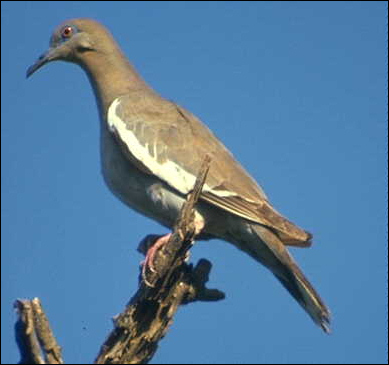

Once, many years ago, numerous ecologists thought that plant and animal communities were natural units that changed little in composition through time—indeed, were units whose members were evolutionarily adapted to one another. When environments changed, it was assumed that the whole community moved as a single entity. More recently, however, it's become evident that the makeup of many such communities are in more or less constant flux—as environments change, some species no longer find the necessities of life and are lost; other species, finding conditions now suitable, move in.
We see this currently in many of our Chihuahuan Desert communities as
various species move in and out. One change that is a joy to many people is the
increasingly abundant White-winged Doves. Not too many decades ago, this bird was
common in the Rio Grande Valley only in southern Texas, extending in small numbers into
the Trans-Pecos Texas portion of the Chihuahuan Desert. Today, this is a common dove in
the El Paso region, in many places outnumbering that long-time inhabitant, the Mourning
Dov

Contributor: Arthur H. Harris, Laboratory for Environmental Biology, Centennial Museum, University of Texas at El Paso.
Desert Diary is a joint production of the Centennial Museum and KTEP
National Public Radio at the University of Texas at El Paso. ![]()

White-winged Dove Zenaida asiatica. Photograph courtesy of the USGS
Patuxent Wildlife Research Center. ![]()